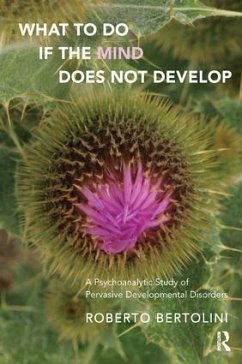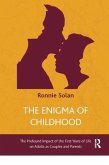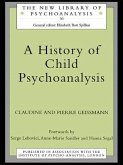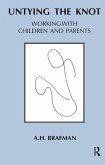Roberto Bertolini
What to Do If the Mind Does Not Develop
A Psychoanalytic Study of Pervasive Developmental Disorders
Schade – dieser Artikel ist leider ausverkauft. Sobald wir wissen, ob und wann der Artikel wieder verfügbar ist, informieren wir Sie an dieser Stelle.
Roberto Bertolini
What to Do If the Mind Does Not Develop
A Psychoanalytic Study of Pervasive Developmental Disorders
- Broschiertes Buch
- Merkliste
- Auf die Merkliste
- Bewerten Bewerten
- Teilen
- Produkt teilen
- Produkterinnerung
- Produkterinnerung
What To Do if the Mind Does Not Develop speaks both to the specialist and researcher and to the reader who is simply interested in the topic, thanks also to a glossary of the more difficult technical terms.
Andere Kunden interessierten sich auch für
What To Do if the Mind Does Not Develop speaks both to the specialist and researcher and to the reader who is simply interested in the topic, thanks also to a glossary of the more difficult technical terms.
Produktdetails
- Produktdetails
- Verlag: Taylor & Francis
- Seitenzahl: 296
- Erscheinungstermin: 13. Januar 2017
- Englisch
- Abmessung: 226mm x 152mm x 23mm
- Gewicht: 499g
- ISBN-13: 9781782204039
- ISBN-10: 1782204032
- Artikelnr.: 45644257
- Herstellerkennzeichnung
- Libri GmbH
- Europaallee 1
- 36244 Bad Hersfeld
- gpsr@libri.de
- Verlag: Taylor & Francis
- Seitenzahl: 296
- Erscheinungstermin: 13. Januar 2017
- Englisch
- Abmessung: 226mm x 152mm x 23mm
- Gewicht: 499g
- ISBN-13: 9781782204039
- ISBN-10: 1782204032
- Artikelnr.: 45644257
- Herstellerkennzeichnung
- Libri GmbH
- Europaallee 1
- 36244 Bad Hersfeld
- gpsr@libri.de
Bertolini, Roberto
Preface
Prologue
Method of Enquiry
Introduction to Part I
The mind model of child psychoanalysis in clinical work with children
An example of psychoanalytic consultation with children: the clinical case of Carlotta (C)
The eyes and the mind (1): on the observational processes in clinical work with children
Clinical Findings
What can be done if the mind does not develop? Encountering bi
dimensionality and absence of meaning while working with child and adolescent psychotics
Is it possible to interpret autistic material in the way we interpret dreams?
Thomas (T), the child trapped in a "deaf and dumb" Pinocchio
like body: in between a disembodied mind and a dehumanised body
Suzanne (S), a Goldilocks
like spiteful little girl: the growth of a new concept of self through the birth of imagination
Rebecca (Re), the child kissed by the Snow Queen: lifeline and perspective as symbolic forms
Implications
The eyes and the mind (2): the exercise of knowing the self and the other
In the clearing of being: the difficult discovery of shared meanings in the process of weaning from therapy in a patient suffering from pervasive developmental disorder
Areas of conceptual and methodological development
the alpha
function
the notion of reverie
the notion of reversal of the alpha
function
the clinical phenomenon of negative contagion
the notion of part object
compositional aspects of communication
the concepts of misconception and disorientation in object relations
the concept of claustrum
the concepts of intransigent and faulty objects
significant form and aesthetic emotion
perspective as a symbolic "form"
Prologue
Method of Enquiry
Introduction to Part I
The mind model of child psychoanalysis in clinical work with children
An example of psychoanalytic consultation with children: the clinical case of Carlotta (C)
The eyes and the mind (1): on the observational processes in clinical work with children
Clinical Findings
What can be done if the mind does not develop? Encountering bi
dimensionality and absence of meaning while working with child and adolescent psychotics
Is it possible to interpret autistic material in the way we interpret dreams?
Thomas (T), the child trapped in a "deaf and dumb" Pinocchio
like body: in between a disembodied mind and a dehumanised body
Suzanne (S), a Goldilocks
like spiteful little girl: the growth of a new concept of self through the birth of imagination
Rebecca (Re), the child kissed by the Snow Queen: lifeline and perspective as symbolic forms
Implications
The eyes and the mind (2): the exercise of knowing the self and the other
In the clearing of being: the difficult discovery of shared meanings in the process of weaning from therapy in a patient suffering from pervasive developmental disorder
Areas of conceptual and methodological development
the alpha
function
the notion of reverie
the notion of reversal of the alpha
function
the clinical phenomenon of negative contagion
the notion of part object
compositional aspects of communication
the concepts of misconception and disorientation in object relations
the concept of claustrum
the concepts of intransigent and faulty objects
significant form and aesthetic emotion
perspective as a symbolic "form"
Preface
Prologue
Method of Enquiry
Introduction to Part I
The mind model of child psychoanalysis in clinical work with children
An example of psychoanalytic consultation with children: the clinical case of Carlotta (C)
The eyes and the mind (1): on the observational processes in clinical work with children
Clinical Findings
What can be done if the mind does not develop? Encountering bi
dimensionality and absence of meaning while working with child and adolescent psychotics
Is it possible to interpret autistic material in the way we interpret dreams?
Thomas (T), the child trapped in a "deaf and dumb" Pinocchio
like body: in between a disembodied mind and a dehumanised body
Suzanne (S), a Goldilocks
like spiteful little girl: the growth of a new concept of self through the birth of imagination
Rebecca (Re), the child kissed by the Snow Queen: lifeline and perspective as symbolic forms
Implications
The eyes and the mind (2): the exercise of knowing the self and the other
In the clearing of being: the difficult discovery of shared meanings in the process of weaning from therapy in a patient suffering from pervasive developmental disorder
Areas of conceptual and methodological development
the alpha
function
the notion of reverie
the notion of reversal of the alpha
function
the clinical phenomenon of negative contagion
the notion of part object
compositional aspects of communication
the concepts of misconception and disorientation in object relations
the concept of claustrum
the concepts of intransigent and faulty objects
significant form and aesthetic emotion
perspective as a symbolic "form"
Prologue
Method of Enquiry
Introduction to Part I
The mind model of child psychoanalysis in clinical work with children
An example of psychoanalytic consultation with children: the clinical case of Carlotta (C)
The eyes and the mind (1): on the observational processes in clinical work with children
Clinical Findings
What can be done if the mind does not develop? Encountering bi
dimensionality and absence of meaning while working with child and adolescent psychotics
Is it possible to interpret autistic material in the way we interpret dreams?
Thomas (T), the child trapped in a "deaf and dumb" Pinocchio
like body: in between a disembodied mind and a dehumanised body
Suzanne (S), a Goldilocks
like spiteful little girl: the growth of a new concept of self through the birth of imagination
Rebecca (Re), the child kissed by the Snow Queen: lifeline and perspective as symbolic forms
Implications
The eyes and the mind (2): the exercise of knowing the self and the other
In the clearing of being: the difficult discovery of shared meanings in the process of weaning from therapy in a patient suffering from pervasive developmental disorder
Areas of conceptual and methodological development
the alpha
function
the notion of reverie
the notion of reversal of the alpha
function
the clinical phenomenon of negative contagion
the notion of part object
compositional aspects of communication
the concepts of misconception and disorientation in object relations
the concept of claustrum
the concepts of intransigent and faulty objects
significant form and aesthetic emotion
perspective as a symbolic "form"






